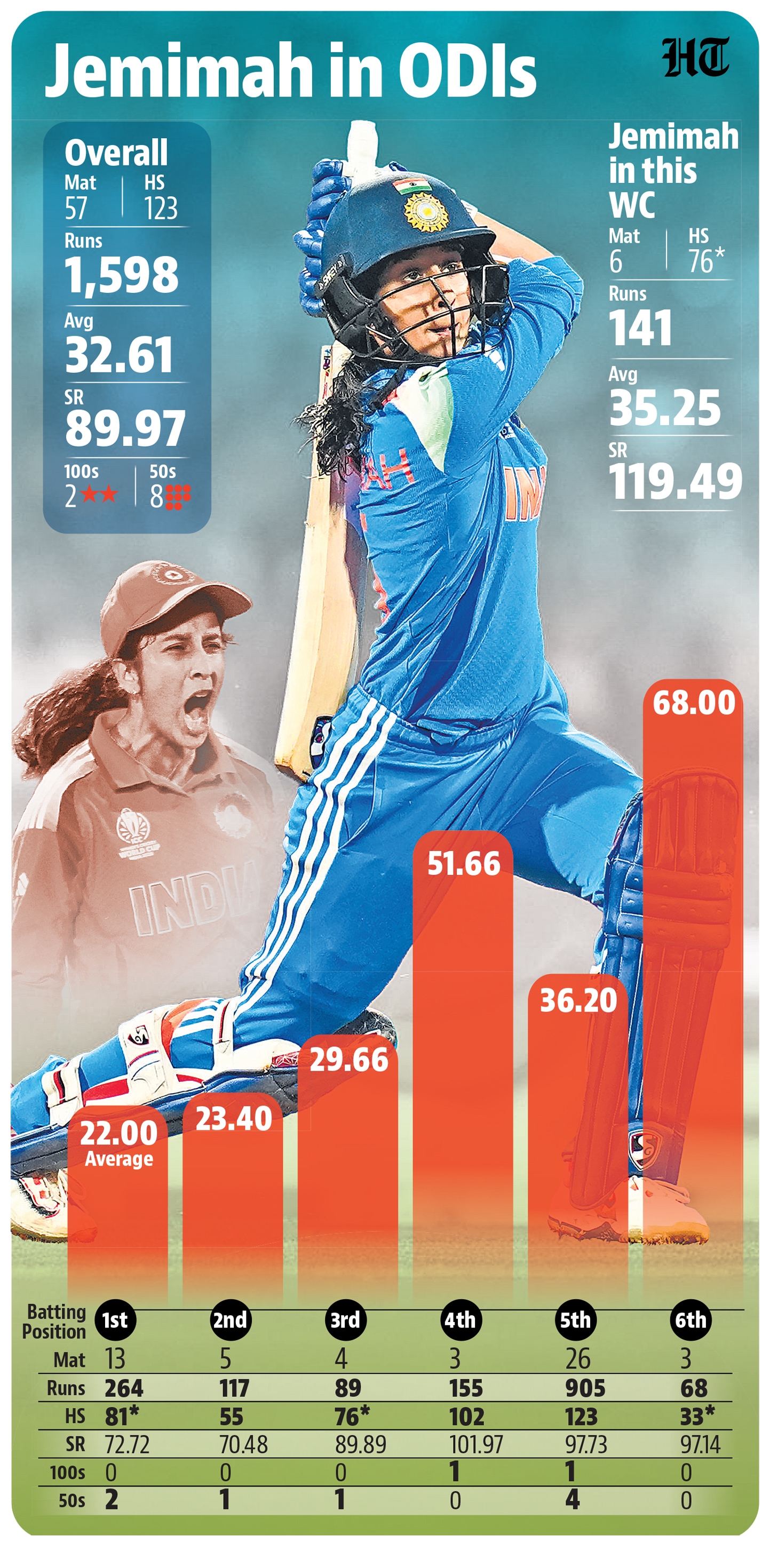MUMBAI: Jemimah Rodrigues has had a few setbacks in her limited overs career, but nothing quite prepared her for the shock of being dropped from the playing XI during the home World Cup against England at Indore. She deserved it but it still hurt.

Having established her place in the side after making her debut in 2018, the 25-year-old came into the tournament as a batter, who, at No 5, would hold the innings together for India in case of a collapse or provide impetus if that is the demand.
But, in life and in sport, things don’t always go to plan. Her campaign got off to a worst-possible start with a first-ball duck against Sri Lanka. She had similar dismissals in the next two games, falling leg before wicket, including another duck against South Africa. With the team’s campaign in disarray after two consecutive defeats, a 21-ball 33 didn’t save her from the axe when India decided to experiment with an extra bowler for the game against England.
With the changes not having the desired result, the team management decided to draft Jemimah back into the playing 11 for the high stakes game against New Zealand.
She took it in her stride and produced a sparkling unbeaten 76 to help India get the finish they were after. There was flourish in her drives against the pacers while she found the gaps with her innovative strokeplay against the spinners.
Often criticised for being unable to pick the scoring rate, the frail-looking batter displayed she could pack a punch for 11 fours (strike rate of 138.18). She put the setback behind her to race to 50 off 38 balls (7 fours) and accelerated further to help India finish on 340/3 in 49 overs.
Slated to bat at No 5, captain Harmanpreet Kaur promoted Jemimah to No 3 after a strong opening stand of 212 by the India openers.
“Imagine a player is down in the dumps, and then she is told to play differently; to go out and play such an innings is commendable. It is great for her morale and a good option for the team,” said Prashant Shetty, who has been coaching Jemimah from her early days at the MIG Academy ground, Bandra, along with Prithvi Shah.
“I feel she will have that confidence now, she will feel ‘I can come back from any situation’,” added Shetty.
It was about controlling her nerves. “The emotions are naturally up and down, disappointment is there, you are dealing with criticism… It was important to block all that. The key was to be compact for the first 8-10 deliveries, have that clarity in your gameplan, then play as per the situation.”
Looking at her grip is a ritual one can see the batter do before every ball. Correct grip is the key to her timing.
“She is very conscious about her grip. We only focus on the grip, if the grip changes then thoda gadbad hota hai in the upswing as well as the downsizing of the bat. It can happen when you keep playing continuously as you lose strength in the hand. If the top hand changes (drifts towards the outer edge of the splice slightly more), when trying to play straight the ball goes towards the cover.
“The extra punch in her drives comes from her downswing, it is one of the best in world cricket, men or women.”
The coach says the batter’s high fitness level allows her to go low for her strokes. “Because she is very fit and flexible she can go low to play the sweep and the reverse sweep, creating that area of scoring 360 degrees.”
With Jemimah’s success, there’s a debate over the right choice at the No 3 position. Prior to the game against New Zealand, Harleen Deol batted at the pivotal position. Hasn’t the fluent innings helped seal the No 3 spot?
The coach said: “My opinion is to send such a batter at No 3, out of 10 games even if she delivers in 5 matches, you stand a better chance of winning. She is mentally ready. If they need it, she will do it.”
A World Cup semi-final, against the mighty Australia, will be a challenge but it will also be an opportunity. For Jemimah, the occasion will be extra special because the game is being played on her home ground and she would love nothing more than to show that this is a place she rules.








